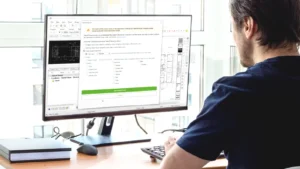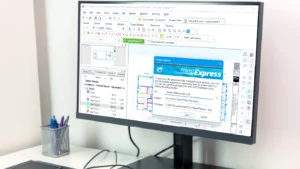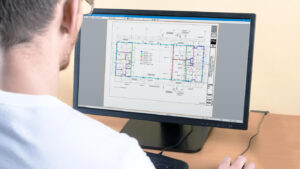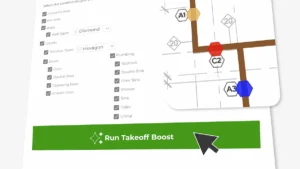For construction estimators, tight deadlines, the pressure to be precise, and the never-ending pile of work are just parts of a typical workday. It can feel tiresome, but finding a balance between accuracy and efficiency doesn’t have to be impossible.
In short:
Try these tips to help save time and increase efficiency:
- Batch similar tasks together in order to avoid disruption and confusion.
- Create and use checklists to make sure all takeoff tasks are complete, every time.
- Try time-blocking to reduce mistakes, distractions, and stress.
- Implement takeoff software like On-Screen Takeoff® to use features designed to help estimators work smarter.
The Challenge
For many estimators, inefficiency is one of the biggest challenges. The takeoff process is critical but it can also be really time-consuming. If you’re relying on manual methods, you’re spending more time than necessary.Did you know that manual takeoffs can take up to 40% longer compared to automated processes? That’s extra time you could spend winning bids or focusing on strategy for your business.
For many estimators, inefficiency is one of the biggest challenges. The takeoff process is critical but it can also be really time-consuming. If you’re relying on manual methods, you’re spending more time than necessary. Did you know that manual takeoffs can take up to 40% longer compared to automated processes? That’s extra time you could spend winning bids or focusing on strategy for your business.
In addition, the constant pressure of deadlines and working overtime can lead to burnout. Stress and work cynicism are common among estimators, and it doesn’t just affect the individual. It impacts teams and contributes to delays in critical projects and higher turnover rates in the industry.
Being an estimator is a tough job, but there are ways you can take control of your time, reduce stress, and improve your workflow by making a few changes.
Estimator Tips to Improve Efficiency
Working smarter doesn’t require a big change to your workflow. Start small with these simple methods and apply them to your day-to-day tasks today.
1. Batch Similar Tasks Together
Multitasking may seem productive, but it splits your focus and can waste more time. Try grouping similar tasks together. For example, tackle all takeoffs for a specific material type before moving on to another. This simple change can reduce distractions and help you work more smoothly.
2. Create and Use Checklists
Staying organized is half the battle. That’s why checklists can be a simple yet powerful way to work smarter. Write out the steps you follow for all takeoffs to ensure nothing gets missed. Plus, having checklists that can be shared with your team can improve consistency and collaboration by keeping everyone on track.
3. Block Out Time for Focused Work
Time-blocking promotes focused work, reduces work anxiety, and enhances work-life balance. Set aside uninterrupted blocks of time for detail-heavy tasks like takeoffs. During these blocks, eliminate distractions by turning off notifications, closing your email and messaging apps, and setting boundaries with coworkers. Focused time can help you complete tasks faster and reduce the chances of making mistakes.
These three tips are easy strategies you can implement to your workflow to save time and boost productivity. But if you’re looking to maximize efficiency without sacrificing accuracy, adopting the right tools can make a big difference.
How On-Screen Takeoff® Helps Estimators
When it comes to working smarter, perhaps the biggest estimator tip is to adopt a takeoff tool, such as On-Screen Takeoff. On-Screen Takeoff provides tools that allow estimators to truly save time and work smarter.
One of the most impressive features that estimators use frequently is Typical Groups.
Estimators commonly work on projects that involve repetitive layouts, like apartment buildings, hotels, or a 10-story office building. Traditionally, you must complete the same takeoffs again and again for each identical area. Not only does this take a lot of time, but it also increases the likelihood of inconsistencies and errors. With Typical Groups, you only define the repeating area once. Then, with just a few clicks, you can place that takeoff across all the identical areas in your project.
For example, the floor plan below shows a repeating layout. With Typical Groups, an estimator only needs to do takeoff for one of the 14 layouts seen in the plan.

Once the takeoff is drawn, simple click to apply the takeoff to the other repeating layouts on the plan.
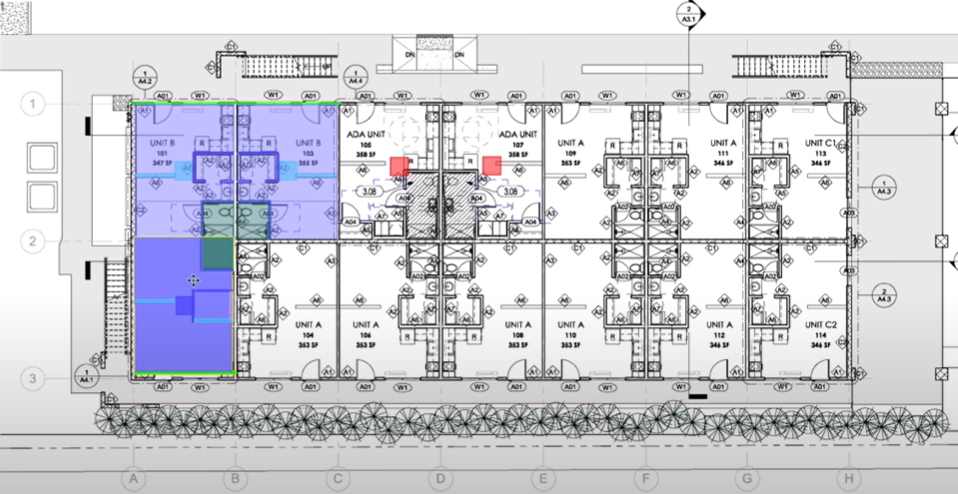
Not only does this save significant time, but it also ensures consistency in your takeoffs. For projects with repetitive elements, Typical Groups reduce the chances of human error often caused by manual duplication.
With Typical Groups, estimators are gaining back hours of their time and completing takeoffs faster than they thought possible. Repetitive tasks are now handled with ease, which means you have more time to focus on other tasks or enjoy a well-deserved break.
Say goodbye to a stressful, time-consuming workflow. By adding smarter habits and tools like On-Screen Takeoff to your everyday methods, you can save time, reduce stress, and completely more accurate bids.
Want to see Typical Groups and other powerful features in action? Request a demo today to learn how On-Screen Takeoff can transform your workflow.
